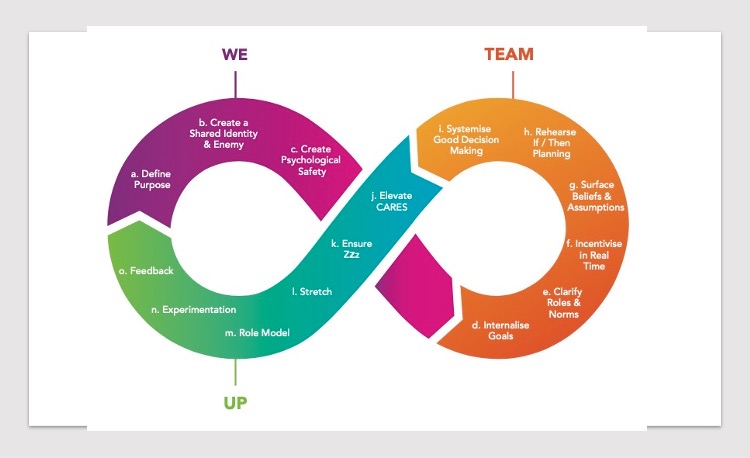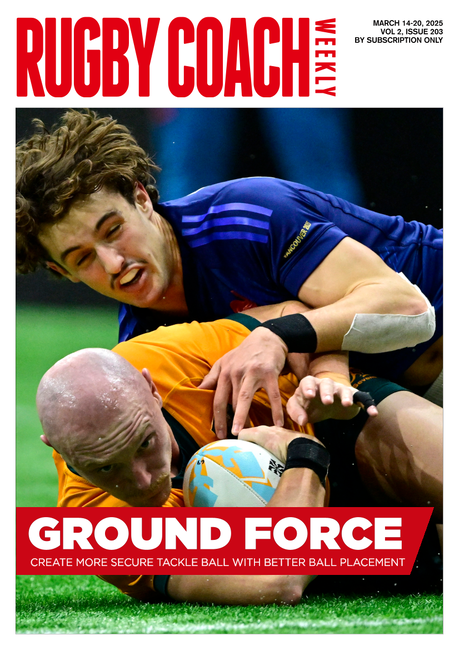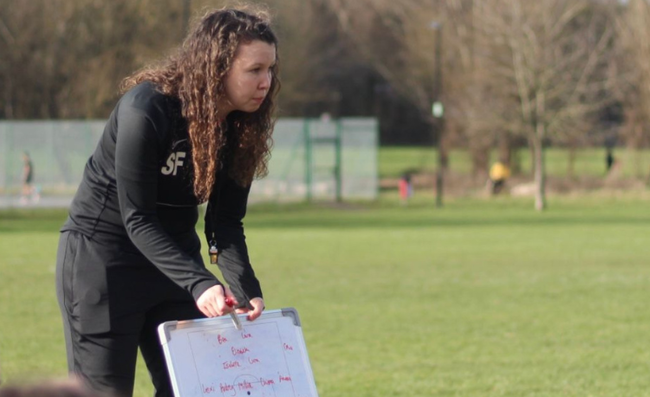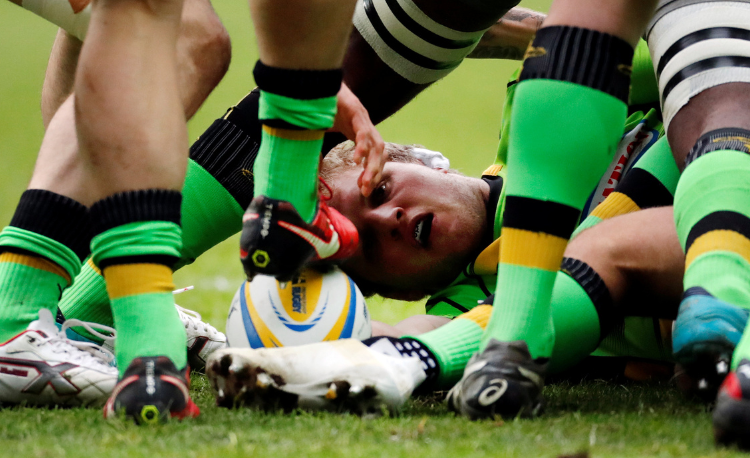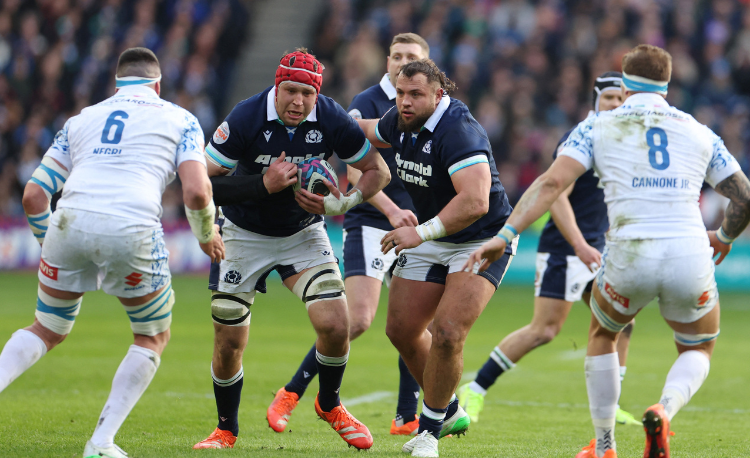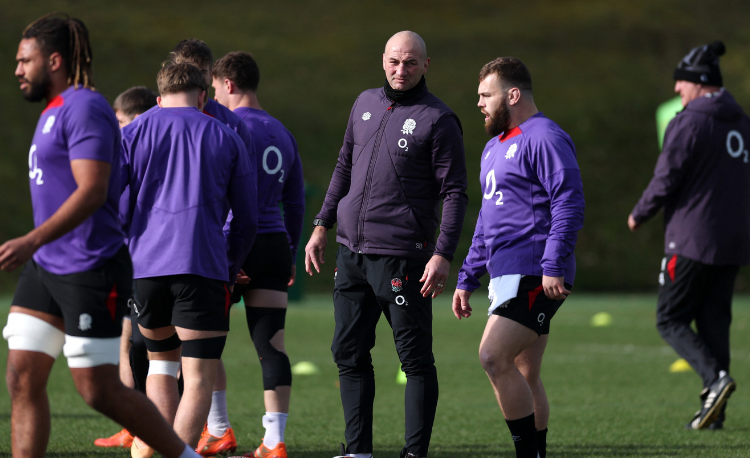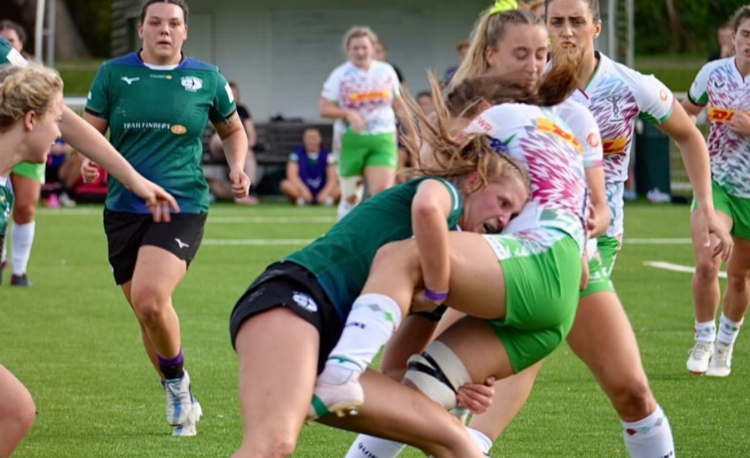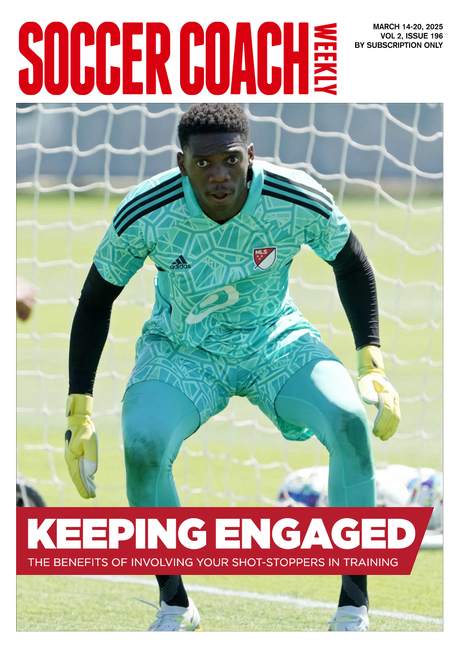Driving performance
In the last of a three-part series, ANDY LONGLEY and ALI TISDALL, from the coachup academy, explore ’up’ factors in the art and neuroscience of coaching.
In recent weeks, we have been dissecting the three-pronged We-Team-Up model of building a high-performing and socially connected team.
Our first piece, which appeared in RCW 120 (July 28th), broke down the We part of that - how a coach uses shared purpose, identity and relationships to create the required foundations.
The second, which appeared in RCW 123 (August 18th), explored the Team factors - how a coach uses the clarity of role, goals, incentives, scenario-planning and robust decision-making to create the conditions for optimum team flow.
In this final piece, we explain the Up part of the model - how a coach uses motivation and ’stretch’ to drive performance, how they role model and how they instill a feedback culture within their team.
Up factors
The Up element is all about raising motivation, growth and team performance bars to the next level.
These can be broken down into six key factors - motivation and CARES; rest and wellbeing; stretch; role modelling; experimentation; and feedback.
Motivation and CARES
A coach needs to motivate individual players and a team, which means focusing on what the brain ‘CARES’ about.
CARES is our acronym for five universal motivators - Certainty, Agency, Relationships, Equity and Social Status.
For example, if players feel they have a sense of control (Agency), are Certain about what lies ahead, have positive Relationships and Social Status in the team, and feel there is Equitable treatment among members, they will be extra motivated.
A great coaching practice is to ask each player which of the CARES factors motivates them the most and then use them throughout the season.
Rest and wellbeing
A coach has a large part to play in ensuring team members come ready to perform, by promoting rest, nutrition and energy boosters.
We know sleep is essential for physical performance, but it is also important for cognitive performance - things like memory, attention, decision-making and creativity are all negatively affected by a lack of rest.
How can coaches expect their players to remember a new move or strategy if their cognitive functioning is impaired due to a lack of sleep?
"Attention, decision-making and creativity are all affected by a lack of rest..."
Eddie Jones, the Australia head coach formerly in charge of England, is a great exponent of prioritising rest and recovery as part of his training and preparation strategies.
Jones is known to monitor players’ training loads, providing sufficient recovery time between matches and managing their playing time effectively to avoid burnout and maintain high performance.
Stretch
Growing the players through ’stretch’ is a powerful part of the Up model.
Learning through ’stretch’ means helping your players acquire knowledge and new skills by deliberately challenging them beyond their current abilities or comfort zones. It involves you, as the coach, supporting them to push the boundaries of their known capabilities.
As a practical example, the most recent research tells us that the optimal zone for learning ‘stretch’ is to have a success rate of 85% and a failure rate of 15%. This will balance building confidence with learning through failure.
A great example of this is Sir Alex Ferguson, the legendary former manager of Manchester United FC.
Sir Alex was known for setting stretch goals to push his footballers beyond their perceived limits and allowing them to achieve something extraordinary.
He set the goal of winning a then-unprecedented treble - the Premier League, the FA Cup and the Uefa Champions League - which they achieved in 1999, becoming the first English club to do so.
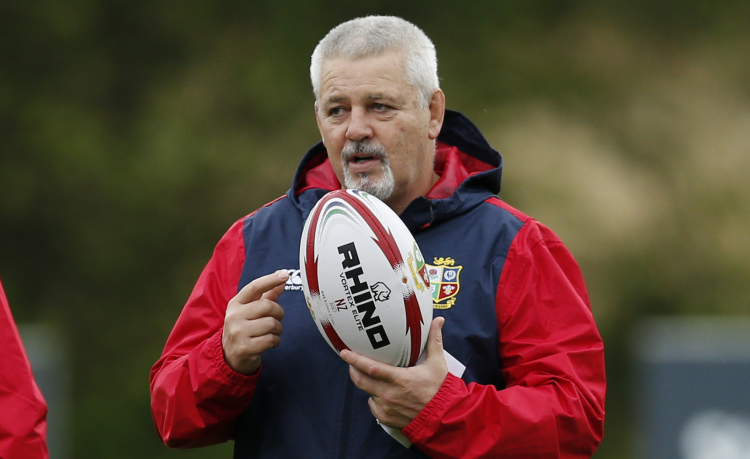
Role modelling
We all know we are a role model to our players. But did you know that having role models, or learning through observation, is our earliest method of learning and it retains its power throughout life?
High-performance coaches understand this and intentionally role-model the behaviours and attitudes they want to see in their team, without dropping their guard.
Another practical way to leverage role-modelling to shape high performance is to identify the other social influencers in your team and partner with them to set the standards consistently.
A tip here is to seek those who have the highest social status in the team, not necessarily the best players.
A powerful example is having a leadership group among players. This is well used in international rugby teams but the trick is to include influential junior members and not only the most senior players.
Experimentation
Another key coach play which forms part of the ‘Up’ model in a high-performing team is to understand the key role experimentation plays in creativity and innovation.
All too often, players don’t feel safe enough to try things in case they fail, or feel as though they don’t have permission to experiment. This stifles creativity, learning and high performance.
Consider this: In what parts of your training program or games do you actively encourage your players to experiment?
From birth, we are hard-wired to partner blame with failure. This pre-conditioning means players don’t naturally experiment where failure is a possible outcome. High-performing coaches break down this mental association and invite experimentation into their team environment.
A high-profile example is that of Jürgen Klopp, head coach of Liverpool FC. He is known to deliberately encourages his players to take risks, experiment with new tactics and express themselves on the field.
Klopp does this to foster a culture of continuous learning and experimentation, where players are not afraid to try new things and learn from both their successes and failures.
Another great example is Cheryl Reeve, the head coach of women’s NBA team, the Minnesota Lynx. She is reknowned for encouraging her players to experiment with different playing styles and strategies in training and matches. She does this to stimulate innovation in their playing style and has fostered a team culture of growth and exploration.
Feedback
We all find it tough to give constructive feedback to someone else - players are no different. In fact, if they are teenagers they find it even more challenging.
A great way to nurture a feedback culture is to ask for it regularly. This lets players know that it is an expected behaviour and also helps you identify possible blind spots in your own game.
After all, feedback culture is a learning culture - and a learning culture is a high-performance culture.
"Often, players don’t feel safe enough to try things in case they fail. This stifles creativity..."
One coach known for valuing feedback from their players is Steve Kerr, head coach of the Golden State Warriors in the NBA.
Kerr believes in creating an environment where players feel comfortable expressing opinions. He encourages open communication and regularly seeks feedback from his players, both during games and in team meetings.
Kerr values the perspectives and insights of his players and understands that their feedback can contribute to the team’s success. He believes that incorporating their ideas and suggestions not only empowers players but also leads to better decision-making and overall team performance.
By taking this approach, Kerr has deepened the trust and psychological safety he shares with his players because his lack of ego, demonstrated by seeking input, is a key component of building trust.
Another powerful example is Wales head coach Warren Gatland. He often holds individual and group meetings with players to gather feedback on various aspects of the team’s performance, tactics and strategies.
He recognises that the players are directly involved in the action on the field and their insights and perspectives can be crucial in making effective decisions.
By involving his players in the decision-making process, Gatland not only empowers them by giving them agency, but also helps foster a strong sense of ownership and accountability within the team.
Now that you know about the critical factors in being a high-performance coach and creating a team environment which takes your players’ performance to the next level, it’s over to you. Good luck - and remember, better teams mean better times.
If you would like to benchmark yourself against the We-Team-Up factors and gain some practical suggestions to apply in your coaching, click here to get a 40% discount off the ’coach-selfie’ assessment, Team Activity cards (practical activities), their e-book and community membership - exclusively for RCW readers.
Related Files
Newsletter Sign Up
Coaches Testimonials

Gerald Kearney, Downtown Las Vegas Soccer Club

Paul Butler, Florida, USA

Rick Shields, Springboro, USA

Tony Green, Pierrefonds Titans, Quebec, Canada
Subscribe Today
Be a more effective, more successful rugby coach
In a recent survey 89% of subscribers said Rugby Coach Weekly makes them more confident, 91% said Rugby Coach Weekly makes them a more effective coach and 93% said Rugby Coach Weekly makes them more inspired.
Get Weekly Inspiration
All the latest techniques and approaches
Rugby Coach Weekly offers proven and easy to use rugby drills, coaching sessions, practice plans, small-sided games, warm-ups, training tips and advice.
We've been at the cutting edge of rugby coaching since we launched in 2005, creating resources for the grassroots youth coach, following best practice from around the world and insights from the professional game.


